Don't like raw fish but wanna try sushi in Japan? Is there sushi without fish in Japan? Find out here!
When talking about Japanese cuisine, it’s impossible not to mention sushi and when you visit Japan, it’s one of the dishes that you must try. Sushi can be found virtually anywhere in Japan from convenience stores all the way to 5-star restaurants.
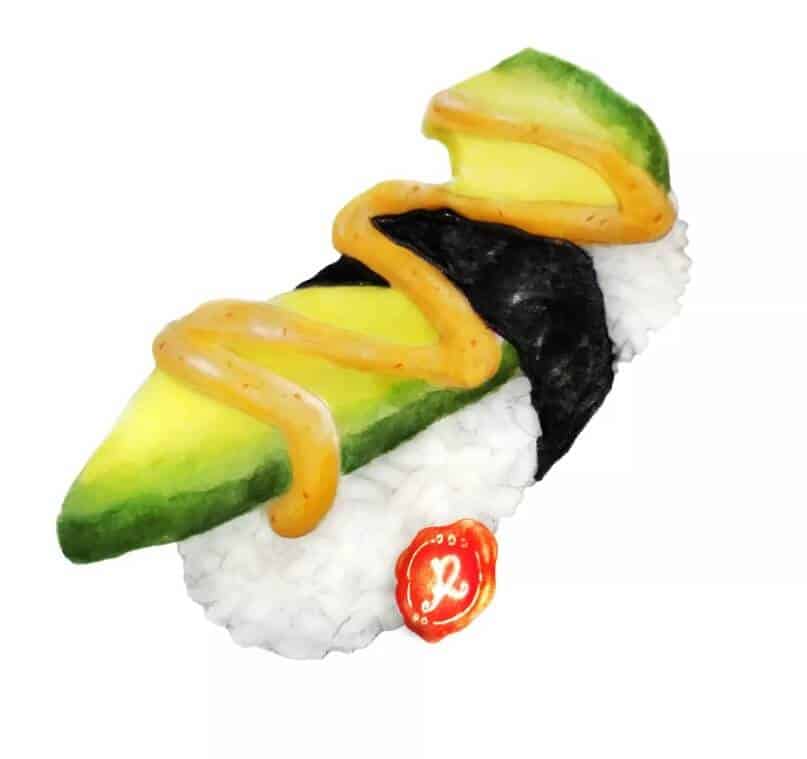
The reason why sushi could be bought anywhere in Japan is because of the convenience that it brings and how easy it is to eat. The locals can eat it on the go and match with their busy schedule and lifestyle, or enjoy it in a restaurant for a nice dinner.
Nowadays, modern cuisine has given a new twist to traditional Japanese sushi and in this article, we’ll talk about whether you can ask for sushi without fish or not in Japan.
So, what are you waiting for? Let’s get started!
Is There Sushi Without Fish In Japan?
Yes, there is sushi without fish. In fact, there are many different types of sushi that do not contain any fish. Some popular examples include:
- California rolls: These rolls are made with cucumber, avocado, and imitation crab meat.
- Tamago rolls: These rolls are made with sweet omelet.
- Vegetable rolls: These rolls can be made with a variety of vegetables, such as cucumber, avocado, carrots, and asparagus.
- Tempura rolls: These rolls are made with tempura-battered vegetables or seafood.
- Unagi rolls: These rolls are made with grilled freshwater eel.
Sushi without fish is a great option for people who do not eat fish or seafood, or for those who are looking for a vegetarian or vegan option. It is also a good way to try new flavors and textures in sushi.
Japanese Cuisine Culture As A Whole
Japan is known to have amazing food and it shows with its global popularity and influence to other countries as well. You’ll see sushi, ramen, udon, and other delicious Japanese meals in neighboring countries like South Korea and Western countries as well like the United States.
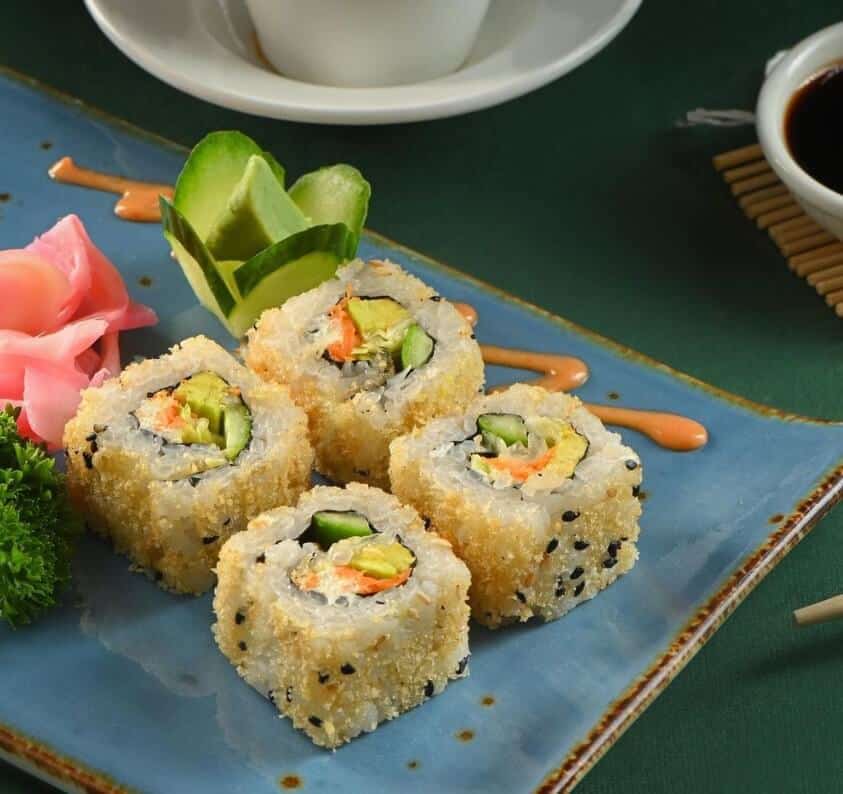
Now, Japanese cuisine wouldn’t be this globally known and recognized without the help of quality ingredients and produce that the Japanese use in their food and cuisine. These quality ingredients make sure that the food being served is always fresh and sumptuous whatever season or occasion it is.
Japan is known to have quality fish since the country is surrounded by crystal clear seas and oceans. In our previous article, we discussed the different famous fishes found in Japan.
- Top Conveyor Belt Sushi Restaurants in Tokyo
- Best Types Of Sushi To Try When Visiting Japan
- 3 Reasons Why Japanese Eat Raw Fish And Love It!
Traditional Japanese Cuisine
Since Japan is known to have amazing and fresh fishes, it’s safe to say that it’s a must to have in sushi or sashimi. The freshness of these different types of fishes makes it optimal to eat raw or just seared a little so that the freshness is still intact.
This is why the common sushi dishes that you see everywhere in Japan have a type of meat, commonly fish, that accompanies the other ingredients. This is the sushi that the whole Japanese population grew up with and got familiar with.
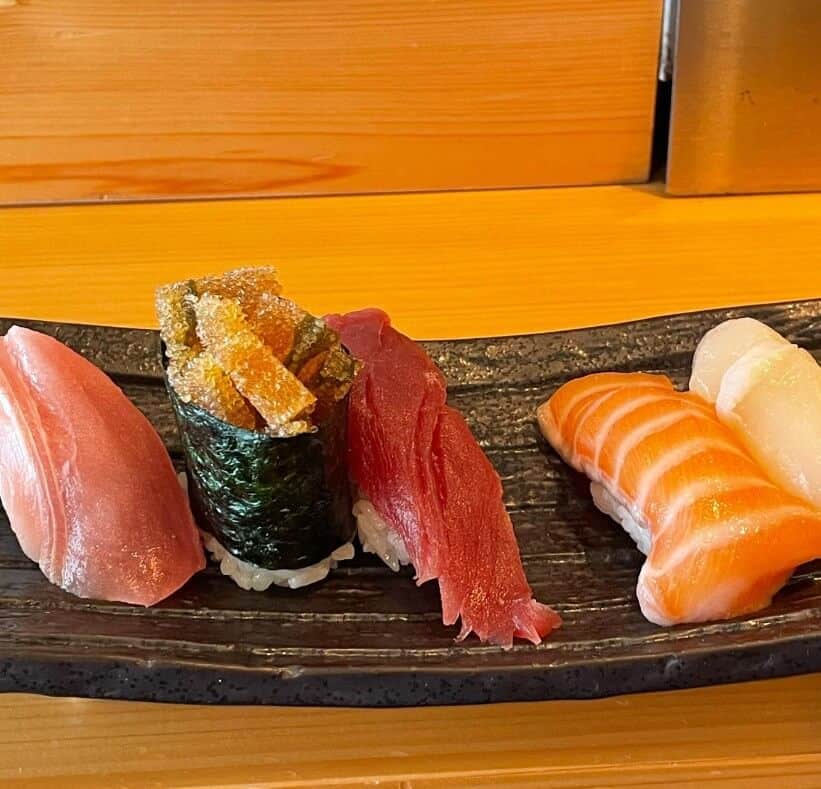
As mentioned earlier, Japan is known for having fresh and delicious fishes that are used for traditional dishes like sushi and sashimi. A few common names of fishes caught in Japan are salmon, mackerel, and tuna.
Japan’s abundance in fresh fish reflects on the amount of times it is used in their traditional cuisine which is why it’s one of the most common ingredients used in famous dishes like sushi, sashimi, buri daikon, miso-zuki salmon, and many more.
Modern Japanese Cuisine As A Response To Veganism
Despite all of this, modern cuisine has made strides to include a demographic of people that doesn’t eat meat. They found a way to incorporate veganism with Japanese cuisine so that people can still enjoy Japanese delicacies like sushi without the fish or the meat.
You can definitely ask for sushi without fish in Japan and these are commonly known as plant-based sushi options that are getting more and more famous among the Japanese people and it tastes almost the same with traditional sushi too.
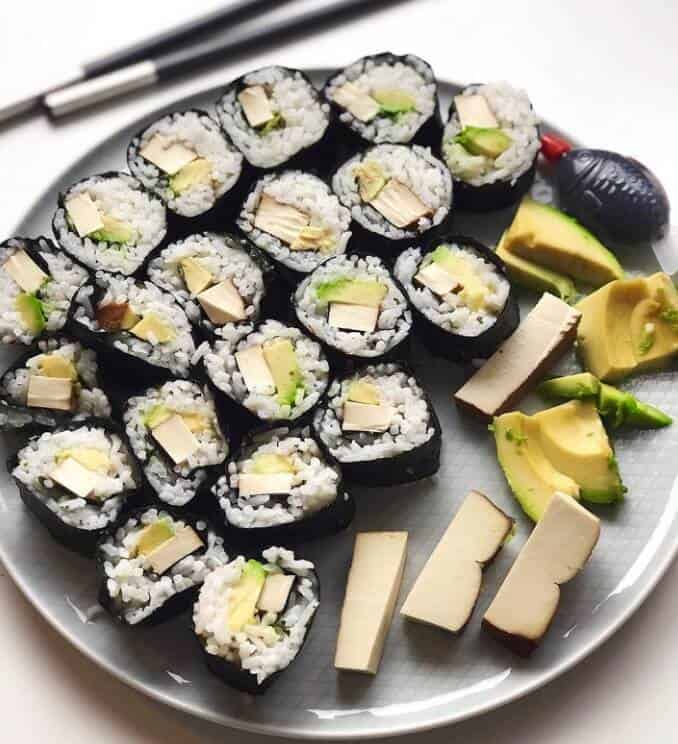
One famous variant is the avocado roll and the avocado is basically used as a literal substitute to the fish. A chunk of ripe avocado is placed alongside typical sushi ingredients like rice and served as is.
Another substitute to fish is the cucumber rolls and it’s more of a lighter bite because the alternative to the fish here is cucumber. Just like the avocado rolls, the ingredients alongside the cucumber are just the same like how you see in traditional sushi.
Lastly, pickled ginger is also used as an alternative for the traditional fish in the sushi although not very popular.
Japanese Sentiments Towards Vegan/Vegetarian Eating
Compared to Western countries like the United States, vegan or vegetarian eating isn’t as popular in Japan but they are making strides in making sure that vegetarians and vegans can still eat well in Japan.
Japan is also starting to pick up on vegan and vegetarian eating when a 2019 survey was conducted by the Japan Meat Information Service Centre. It was found out in the survey that 50% of the Japanese population are aware of meat alternative products that they can consume.
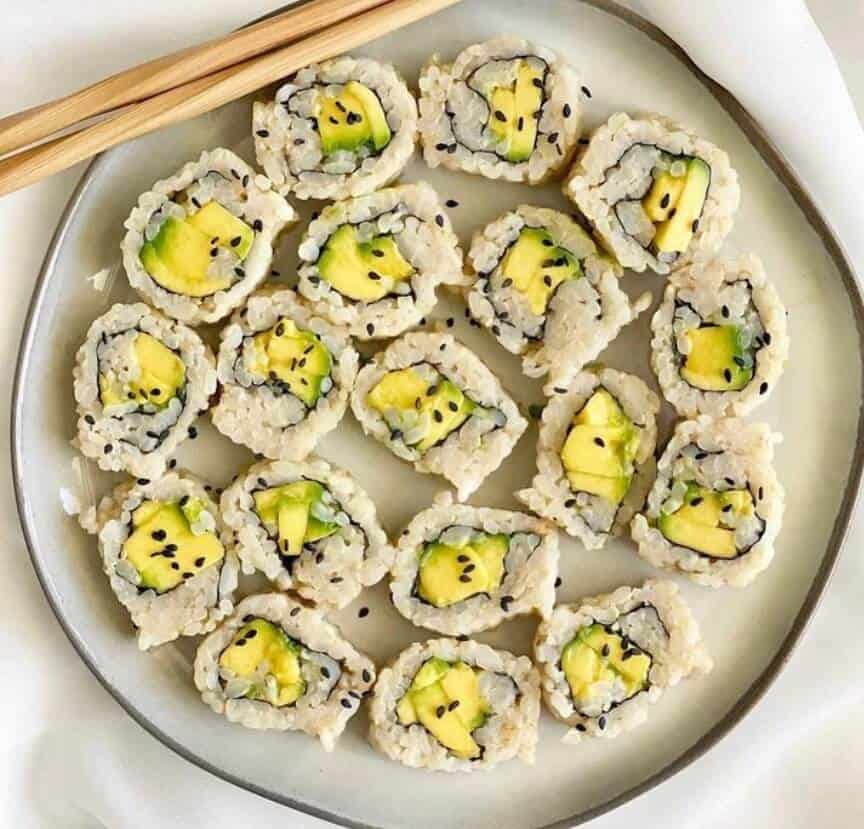
A whopping 60% of the respondents also said that they are willing to switch to plant-based products as an alternative to meat if it will be better for their health in the long run and for the planet.
The growing awareness of the Japanese people with vegan and vegetarian eating has paved the way for more variants of famous and traditional food found in Japan like sushi. There are other dishes that cater to vegans and vegetarians as well that we can talk more about in another article.
Do’s And Don’ts When Eating Sushi In Japan
- Don’t dip your rice in soy sauce
- Dipping the rice portion of the sushi can absorb more soy sauce than you think which can overpower the whole bite and ruin your experience. Turn the sushi to the side and lightly dip the fish part in the soy sauce.
- Don’t mix wasabi with soy sauce
- Some chefs see it as a disrespectful act to mix wasabi with soy sauce because it can ruin the experience and the flavor of the whole sushi. Dip the fish part of the sushi lightly in the soy sauce and then put a bit of wasabi on top.
- Don’t use a lot of wasabi in one sushi
- Putting a lot of wasabi in your sushi can completely change how it’s supposed to taste and it can ruin your experience. Some chefs see this as a tad bit disrespectful as well.
- Don’t eat your sushi in bites
- Sushi is meant to be eaten as a whole which is why it’s created in bite-sized portions. It might come out as disrespectful to the chef to eat it in bites because it will now vary in flavor on each mini bite.
- Don’t rub your chopsticks together
- Rubbing your chopsticks together might come out as disrespectful to the chef and to the staff of the restaurant. Some say that this means that the chopsticks you’re using are of bad quality.
- Don’t order heavy portions at the beginning of the meal
- To get the best experience in authentic Japanese sushi restaurants, it’s better to start off light with the likes of sashimi and nigiri before moving onto heavier portions like sushi.
- Don’t take sushi to go
- In authentic Japanese sushi places, it’s best to eat sushi right after it is prepared by the chef. It might ruin the experience for you to transport your freshly made sushi all the way home.
- Do eat it right away
- Now, when you’re served sushi on the spot by the chef, make sure to eat it right away so that you have enough time to prepare for the next bite. It might come off as disrespectful to the chef as well if you let it sit on your plate for too long.
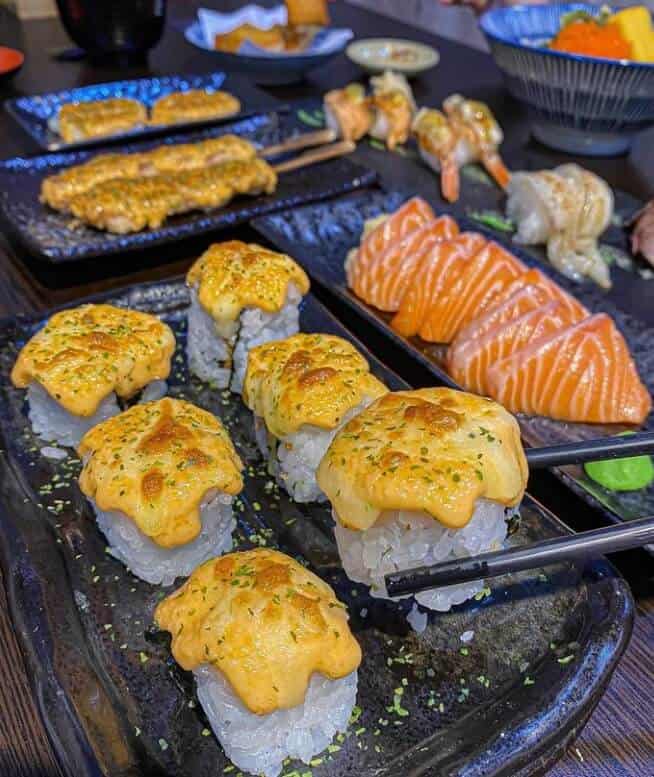
- Do trust your sushi chef
- Your sushi chef knows what they’re doing and they know what to do to give you the best experience in their authentic Japanese restaurant. It’s okay to ask a few questions though!
- Do clean your hands before eating
- Hygiene is very important and it’s a respectful way to begin your interaction with your sushi chef in Japan.
- Do cleanse your palette with the ginger
- Ginger is not meant to be eaten with the sushi, but it’s used to cleanse your palette and flavors so that you’ll be ready for the next sushi to be served.
- Do eat the sushi by the color
- Eating the sushi from light to dark color will help you appreciate the flavors more because the light colored fishes are milder in flavor compared to the dark one. Eating the dark one first might overwhelm your palette.
- Do be friendly
- Don’t be shy to ask questions to your sushi chef and ask what you can do to have a better experience in their restaurant. Your sushi chef wants you to have the best experience possible!
Can You Ask For Sushi Without Fish In Japan
With the new dishes that modern cuisine is bringing alongside vegan or vegetarian diets, you can definitely ask for sushi without meat or fish in Japan. It just goes to show the level of inclusivity that Japan has for everyone to enjoy their culture and cuisine.
Unfortunately, it may be harder to find compared to traditional sushi, but give it some time and it’ll be more accessible for everyone to try just like how you would order and eat a normal sushi.
We hope that this article has been helpful in determining whether you can order or ask for a sushi without fish in Japan or not.



